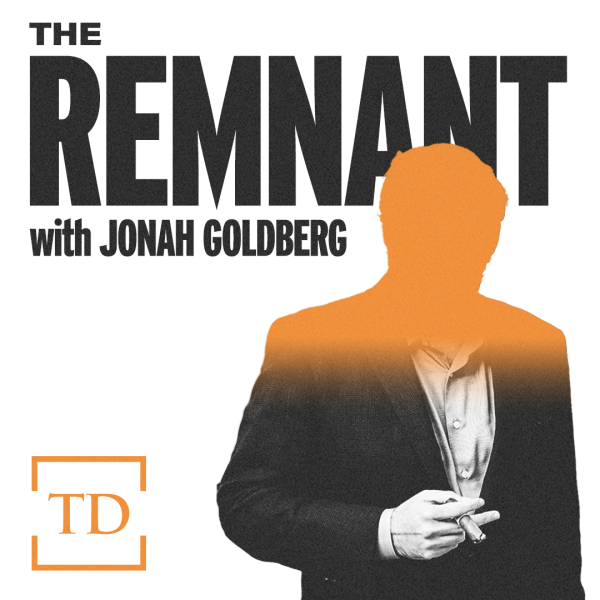The longer I live—and the more I watch the United States grow more diverse and more polarized—the more I’m convinced that the reasonable and textual application of American nondiscrimination law offers us a path through the wilderness. I’m also convinced that we need to change the way in which we argue about issues like “CRT” (critical race theory) and “DEI” (diversity, equity, and inclusion.)
Widespread ignorance about CRT—is it a relatively obscure legal and academic discipline no one really learns until college, or is it an all-encompassing world view that’s infiltrating every aspect of American life?—makes the debate remarkably frustrating. CRT is at once everywhere and nowhere.
A right-wing activist sees a silly or sinister PowerPoint slide from a corporate diversity seminar and says, “CRT!” A left-wing law professor sees the same slide, rolls their eyes, and says, “Derrick Bell would disagree.” Laws drafted to deal specifically with CRT often reflect ignorance and outrage more than careful deliberation and deliberate drafting.
As I’ve argued before, anti-CRT laws are both under-inclusive and over-inclusive. Their short provisions don’t begin to encompass an academic discipline discussed in hundreds of books and thousands of peer-reviewed articles. Yet they also sweep broadly enough to ban instruction in or promotion of ideas that are outside the scope of critical race theory. For example, Tennessee recently banned public school educators from promoting “resentment” against, among other things, any “creed.”
Broad, vague laws thus breed confusion. The likely result is more division, more bitterness, and the making of free speech martyrs in public schools.
And when you take anti-CRT laws outside the public school context—where state power over expression is arguably at its strongest—then they become almost impossible to implement. For example, Trump’s broad anti-CRT executive order, which reached outside the federal government to private federal contractors and private federal grantees, didn’t survive its first legal test.
But what if we stop dealing with racial conflicts in schools, universities, and the workplace by reference to “CRT” but instead by reference to phrases that are more easily understood and well-defined in American law—phrases like “racial discrimination” or “racial harassment”? This formulation allows us to distinguish between offensive ideas (which the law protects) and discriminatory conduct (which the law prohibits.)
I’ve made this argument in the abstract before, but a Stanford psychiatrist and a Stanford therapist are now making it concrete. Earlier today, the Jewish News of Northern California reported that psychiatrist Dr. Ronald Albucher and therapist Sheila Lavin have filed an EEOC complaint against Stanford University’s Counseling and Psychology Services division (CAPS).
The complaint is long and interesting, and I’d urge you (if you have the time) to read the whole thing. But the basic outline of the facts is relatively simple, and they helpfully describe the difference between being exposed to bad ideas and suffering from discriminatory misconduct.
In his report for Jewish News, Gabe Stutman helpfully summarizes the case. “The trouble began in November 2019,” Stutman reports, “when CAPS employees were asked to join weekly seminars run by the Diversity, Equity and Inclusion program within the clinic, formed earlier that year.”
Albucher was initially “excited about and supportive” of the program. However, “his view soured” relatively quickly:
Before their first meeting, CAPS staff were asked to read “White Fragility,” the 2018 New York Times bestseller by Robin DiAngelo. Albucher said the assignment did not appeal to him as an introduction to DEI training because it is deeply pessimistic about race relations in the U.S., and it argues that all white people are fragile on race issues, no matter what.
Let’s pause here briefly. I do not believe it is a civil rights violation to be required to read White Fragility. I think it’s a bad book, but if I had a dollar for every bad book I’ve been asked or forced to read (including in the corporate environment), I could come close to comping your Dispatch subscription.
Assigning White Fragility is a warning sign that the training program is likely to be poorly designed and potentially toxic. It does not forecast a civil rights violation. Moreover, it’s not a civil rights violation if colleagues got mad (as Albucher alleges) when he raised objections to the book’s arguments. But wait. It gets worse:
To discuss White Fragility, the complaint says, DEI members split up CAPS staff by race, facilitating “space for white staff” to “process [their] reaction” to it. The group was later named the “Whiteness Accountability group/book club.”
The complaint describes “racially segregated affinity groups that separated CAPS staff members on the basis of race or perceived race. One of these groups was for white staff, and another group was for staff comprising minorities of color.
Okay, now we’re moving from a discussion of ideas into workplace segregation. Not only is the segregation itself deeply legally problematic, the complainants objected to the way it was done. The complaint alleges that “no affinity group was ever created for members of Jewish ancestral identity,” and I shouldn’t have to explain why it’s problematic to lump Jews into a group set aside for whites—especially given the way in which white supremacists systematically target Jews for violent persecution.
Of course, that’s not all. According to the complainants, the DEI program trafficked in rank Jewish stereotypes and refused to deal adequately with an antisemitic incident:
DEI committee members “justified the omission of anti-Semitism,” the complaint says, “by insisting that unlike other minority groups, Jews can hide behind their white identity.” During the meeting, Albucher and Levin say they were “subjected to anti-Jewish stereotypes,” such as that Jews are “wealthy and powerful business owners.”
Levin was “too intimidated to speak,” the filing says, “fearful of experiencing similar hostility and harassment on the basis of her Jewish identity and race.”
In fact, a DEI leader herself trafficked in Jewish stereotypes:
On May 30, 2020, Levin emailed a DEI leader asking how she could support the program. According to the complaint, the person responded that “as a Jewish, White cis woman you have immense power and privilege. It is important to understand how you are a part of the systemic racism and oppression that takes place in this country.”
It’s important to note that we presently only have Albucher and Levin’s side of the story. Stanford may contest all or part of their account. But if their account is proven true, it could present an excellent illustration of existing law’s potential to block and punish illiberal “anti-racist” discrimination and harassment.
Title VII of the Civil Rights Act of 1964 prohibits an employer from discriminating on the basis of race, color, religion, sex (including LGBT status since the Supreme Court’s Bostock decision last year), or national origin. The definition of unlawful discrimination includes not just a prohibition of, say, outright policy-based discrimination (such as refusing to hire black employees) but also racial harassment.
As the EEOC explains, harassment is “unwelcome conduct” based on the protected categories. Harassment is unlawful when “1) enduring the offensive conduct becomes a condition of continued employment, or 2) the conduct is severe or pervasive enough to create a work environment that a reasonable person would consider intimidating, hostile, or abusive.”
Harassment rightly does not include “petty slights, annoyances, or isolated incidents (unless extremely serious).” But it can include “offensive jokes, slurs, epithets or name calling, physical assaults or threats, intimidation, ridicule or mockery, insults or put-downs, offensive objects or pictures, and interference with work performance.” Moreover, unlawful harassment can come from colleagues, not just supervisors.
When you read these definitions, you can easily see how many of the most toxic and illiberal “anti-racist” concepts can create hostile work environments. Putting white employees through virtual “struggle sessions” not only explicitly discriminates by creating segregated spaces, it’s often intimidating and offensive.
Browbeating Jewish employees for their supposed power and privilege (especially after a racist and anti-Semitic incident on campus where an individual “Zoombombed” a student government meeting with swastikas and the n-word) and trafficking in stereotypes of wealth and influence represent dreadful, legally problematic behavior that any competent HR department should seek to prevent.
Title VII prohibits racial discrimination in employment, but students enjoy ample nondiscrimination protection as well. Title VI protects students from racial discrimination (including racial harassment), and Title IX protects students from sex discrimination (including sexual harassment). Both statutes apply to public and most private schools that receive federal funding.
Critically, each of these statutes protects citizens from discrimination while still broadly preserving the marketplace of ideas (though there are conflicts at the margins). They do not protect Americans from mere hurt feelings. They do not protect Americans from bad ideas. They are more precisely described as aimed far more at conduct than viewpoint—conduct that the “reasonable person” would find severe or pervasive.
Think of the distinction like this. It’s one thing to hear a colleague argue an opposing point of view about racial or religious controversy in good faith, even if you strongly disagree. It’s another thing entirely for an employee to regularly experience different and hostile treatment in the workplace because of their race or religion. Put a different way, silly PowerPoints are just silly. Racial segregation and workplace racial humiliation are unlawful.
As the Supreme Court explained in its seminal 1993 case about workplace harassment, Harris v. Forklift Systems, “whether an environment is ‘hostile’ or ‘abusive’ can be determined only by looking at all the circumstances, which may include the frequency of the discriminatory conduct; its severity; whether it is physically threatening or humiliating, or a mere offensive utterance; and whether it unreasonably interferes with an employee’s work performance.” Courts can also consider whether the employee suffered psychological harm, but “no single factor is required.”
Time and again I read ridiculous complaints that I advocate “surrender” in the face of “wokeness.” Nope, I advocate the rule of law in the face of discrimination and liberty in support of free speech. Those concepts are defined in the law, and they work together to guard both American liberty and American diversity. They stand as a bulwark against the re-emergence of any dominant ideology that would seek to subordinate any American citizen merely because of their racial heritage or the color of their skin.
Indeed, the importance of guarding our nation against racial discrimination is a key reason why the Supreme Court of the United States should hear Students for Fair Admissions’ challenge to Harvard’s admissions policies. There is simply too much evidence of anti-Asian bias for the court to leave the case alone.
I don’t know if Albucher and Levin will prevail in their complaint against Stanford. But I do know that they have demonstrated a constructive, courageous way to battle illiberal and abusive “anti-racist” policies and practices in the American workplace.
One last thing …
I was going to share another NBA highlight, but I realized that I’ve been cruel to my military history readers. It’s been too long since I’ve ended with an interesting YouTube documentary about a poorly-understood battle or war. So, let’s fix it. Here’s the Operations Room on the Battle of Mogadishu, the most intense American urban firefight between Vietnam and Operation Iraqi Freedom. It’s well done:








Please note that we at The Dispatch hold ourselves, our work, and our commenters to a higher standard than other places on the internet. We welcome comments that foster genuine debate or discussion—including comments critical of us or our work—but responses that include ad hominem attacks on fellow Dispatch members or are intended to stoke fear and anger may be moderated.